Hey there, wonderful readers! It's Marsha back again, and this time, I'm excited to share some invaluable insights on a topic close to every dog owner's heart: tips for successful dog meetings. We all know how important it is to introduce our furry pals to potential new friends with care and consideration. Whether you're bringing a new pup into your family or arranging a playdate for your current fur baby, having a well-thought-out game plan can make all the difference. Just like with humans, those first moments of interaction can leave a lasting impression, shaping the dynamics of their future relationship. So, join me as we explore practical strategies and proven techniques to ensure that your dog introductions are a resounding success, leading to a fun and lasting companionship between these adorable four-legged buddies. Let's jump right in and set the stage for wagging tails and delightful doggy encounters!
1. Choose the Right Location
When it comes to introducing dogs to each other, the location plays a pivotal role in setting the stage for a successful encounter. Choosing the right location is not a matter of chance; it requires careful consideration. The key is to select a neutral territory that neither dog views as their own. This means avoiding spaces where one dog might feel possessive or defensive, as it could lead to territorial behavior and potential conflicts. Instead, opt for a neutral ground, such as a nearby park or a friend's yard, where both dogs can feel more relaxed and less inclined to defend their territory. By doing so, you create a balanced environment that fosters a sense of equality and reduces the chances of misunderstandings or hostility during their first meeting. So, remember, a thoughtfully chosen location sets the tone for a smooth introduction, ensuring that the dogs can focus on getting to know each other as potential friends without any unnecessary tensions.
2. Take it Slow
When it comes to introducing dogs to one another, taking it slow is a fundamental principle that should never be overlooked. Just like any relationship, building trust and rapport takes time, and our canine companions are no exception. Patience is the key to success here. Begin by allowing the dogs to become familiar with each other's scent from a safe distance, giving them the opportunity to gather information about their potential new companion without feeling overwhelmed. As they sniff and process these scents, they start forming an understanding of the other dog's presence. Gradually, with each interaction, let them set the pace, respecting their individual comfort levels. Slowly decrease the distance between them over time, ensuring that they remain at ease during the process. Remember, each dog has its unique temperament and personality, and rushing the introduction can lead to unnecessary stress or tension, hampering the chances of a positive bond. By taking it slow and respecting their boundaries, you create a nurturing environment where trust can blossom, allowing their friendship to flourish naturally.
3. Leash Them Up
During the face-to-face introduction between the dogs, it's essential to keep them both on a leash. The leashes serve as a valuable tool, granting you control over the situation and providing a safety net in case intervention becomes necessary. By having them on leashes, you can closely monitor their body language and reactions, allowing you to spot any signs of discomfort or tension early on. Keeping the leashes loose is crucial as it helps to minimize any added stress or apprehension between the dogs. This loose leash approach promotes a sense of freedom and allows them to move naturally, making the encounter less restrictive. However, despite the slack, it's important to be vigilant and prepared to lead the dog away using the leash if needed, should either dog display signs of aggression or fear. Having the ability to quickly and safely separate them can prevent potential conflicts and maintain a positive atmosphere during their introduction.
4. Observe Body Language
When introducing dogs to each other, understanding and observing their body language is of utmost importance. Dogs communicate primarily through nonverbal cues, and being attuned to their signals can provide crucial insights into their emotions and reactions. During the introduction, keep a close eye on their body language, looking for any signs of stress or aggression. Raised hackles, a stiff body posture, growling, baring teeth, and prolonged staring are all indicators that tension or discomfort is present. If you notice any of these behaviors, it's essential to take immediate action. Safely separate the dogs and give them some space to relax. It's crucial not to force the interaction if either dog appears uneasy or defensive. Instead, try again later in a controlled and supervised environment or seek the assistance of a professional dog trainer or behaviorist. A skilled trainer can help identify the underlying issues and guide you in managing the introduction more effectively. Remember, being attentive to their body language allows you to create a safer and more pleasant experience for both dogs, increasing the chances of a successful and harmonious introduction.
5. Use Positive Reinforcement
Using positive reinforcement during the introduction is a powerful tool for fostering a friendly and cooperative relationship between the dogs. When both dogs display amiable and relaxed behavior during the meeting, seize the opportunity to shower them with treats and praise. This positive reinforcement creates a valuable association between the presence of the other dog and delightful rewards, making the interaction an enjoyable and rewarding experience. Treats serve as a tangible expression of approval and appreciation, letting the dogs know that their calm and friendly behavior is highly valued. Alongside the treats, offer ample verbal praise, using a warm and encouraging tone to further reinforce their good behavior. Through consistent positive reinforcement, the dogs begin to understand that meeting each other results in pleasurable outcomes, encouraging them to develop a natural affinity for one another. This positive reinforcement not only facilitates a successful introduction but also sets the foundation for a future filled with joyful and cooperative interactions between the new canine companions.
6. Stay Calm and Relaxed
When introducing dogs to each other, one of the most important factors in ensuring a smooth interaction is for the owner to stay calm and relaxed. Dogs are remarkably perceptive creatures, and they can easily pick up on their owner's emotions and energy. If you approach the introduction with feelings of anxiety or nervousness, it may inadvertently influence the dogs' reactions as well. Dogs look to their owners for guidance and reassurance, so maintaining a sense of calmness is vital to create a positive atmosphere during the meeting. Take deep breaths, speak in soothing tones, and exude a sense of confidence as you oversee the introduction. By projecting an air of tranquility, you provide a safe and reassuring environment for the dogs to interact naturally. Your composed demeanor can help alleviate any potential tension or uncertainty they might feel, encouraging them to approach the introduction with a more relaxed and open attitude. Remember, staying calm and relaxed not only benefits the dogs but also contributes to a more enjoyable and successful introduction overall.
7. Supervise Early Interactions
Supervising the dogs' interactions during the first few weeks, even if the initial meeting went smoothly, is a critical aspect of ensuring a successful integration. While they may have had a positive first encounter, it's important to remember that getting to know each other on a deeper level takes time. As they spend more time together, you'll gain valuable insights into their individual behaviors and dynamics, which can change as they become more familiar with one another. Keep a close eye on their body language and communication cues during these early interactions. Look for signs of tension, discomfort, or any potential conflicts that may arise as they adjust to their new dynamic. If any issues do arise, gently intervene and separate them for a brief period before attempting another interaction later. Gradually increase the duration and frequency of their time together, always prioritizing their safety and well-being. By supervising these early interactions, you can proactively address any challenges and create a secure environment for the dogs to build a bond based on trust and mutual respect.
8. Respect Personal Space
Respecting personal space is a fundamental aspect of introducing dogs to each other successfully. Just like humans, dogs have their own boundaries and need their private area where they can feel secure and at ease. During the initial stages of their interaction, it's good to provide each dog with their designated space, complete with their food, water, and toys. This dedicated area serves as a safe haven for them to retreat to whenever they feel overwhelmed or simply need some alone time. It's essential to avoid forcing them to share their personal spaces, as this could lead to feelings of insecurity or territorial behavior. By offering separate areas, you create an environment where each dog can feel comfortable and in control of their surroundings. As they gradually adjust to each other's presence, they may become more willing to explore and share spaces together on their terms. Respecting their personal space demonstrates your understanding and consideration of their individual needs, ultimately fostering a sense of trust and harmony between the dogs.
9. Exercise Before the Introduction
Prioritizing exercise before the introduction is a smart and proactive approach to setting the stage for a successful meeting between the dogs. A tired dog is generally more composed and receptive, making them less prone to stress or reactivity during their first encounter. Before bringing them together, take each dog for a long walk or engage them in separate play sessions to expel excess energy and promote a sense of relaxation. Physical activity not only tires them out but also stimulates their minds, leaving them in a more balanced and content state. As a result, they are better equipped to handle the new experience of meeting another dog with a calmer disposition. When the dogs come together after a good workout, they are more likely to approach the introduction with curiosity rather than tension. This approach not only facilitates a smoother interaction but also reinforces positive associations with each other. So, lace up those walking shoes or grab their favorite toys for playtime to ensure that both dogs are physically and mentally ready for their memorable meeting.
10. Seek Professional Help if Necessary
If you find yourself uncertain or apprehensive about introducing the dogs on your own, seeking help from a professional dog trainer or behaviorist is a wise decision. These experts have the knowledge and experience to guide you through the process and address any specific concerns or challenges that may arise. Whether it's the first introduction between a new dog and your current pet, or if there have been previous issues with introductions, a professional can offer personalized strategies and techniques tailored to your dogs' unique personalities and needs. Their presence during the introduction can also provide an added sense of security, as they can quickly step in if any unexpected behaviors emerge. With their assistance, you can navigate the introduction process more confidently, creating a safer and more positive environment for the dogs to interact. Remember, seeking professional help is a sign of responsible and caring pet ownership, ensuring that your dogs have the best chance at forming a lasting and friendly relationship with one another.
Introducing dogs to each other is an exciting and rewarding endeavor, but it requires careful planning and consideration. By choosing the right location, taking it slow, and using positive reinforcement, you can set the stage for a successful and harmonious meeting. Remember to stay calm and relaxed during the introduction, as dogs can sense and respond to their owners' emotions. Supervising early interactions and respecting their personal space are vital for building a strong foundation of trust and cooperation. Additionally, ensuring both dogs are well-exercised before the meeting promotes a more positive and relaxed encounter. And if you ever feel unsure or encounter any challenges, don't hesitate to seek assistance from a professional dog trainer or behaviorist. With patience, guidance, and a commitment to their well-being, you can pave the way for a beautiful and enduring friendship between your beloved canine companions. Happy introducing!

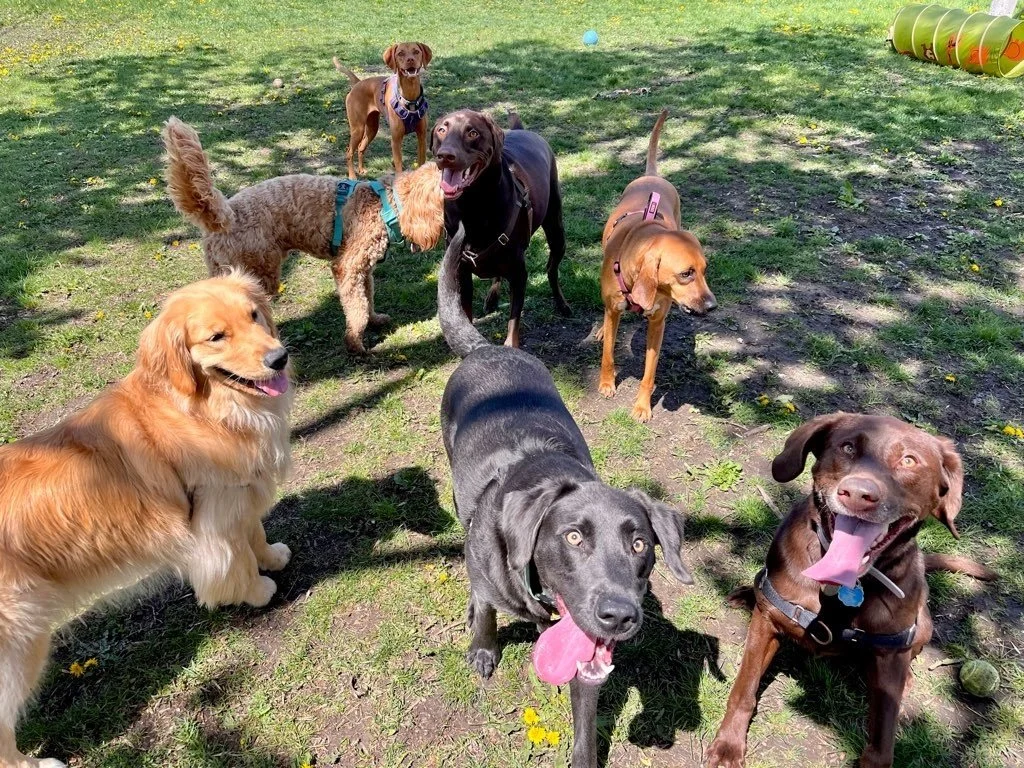
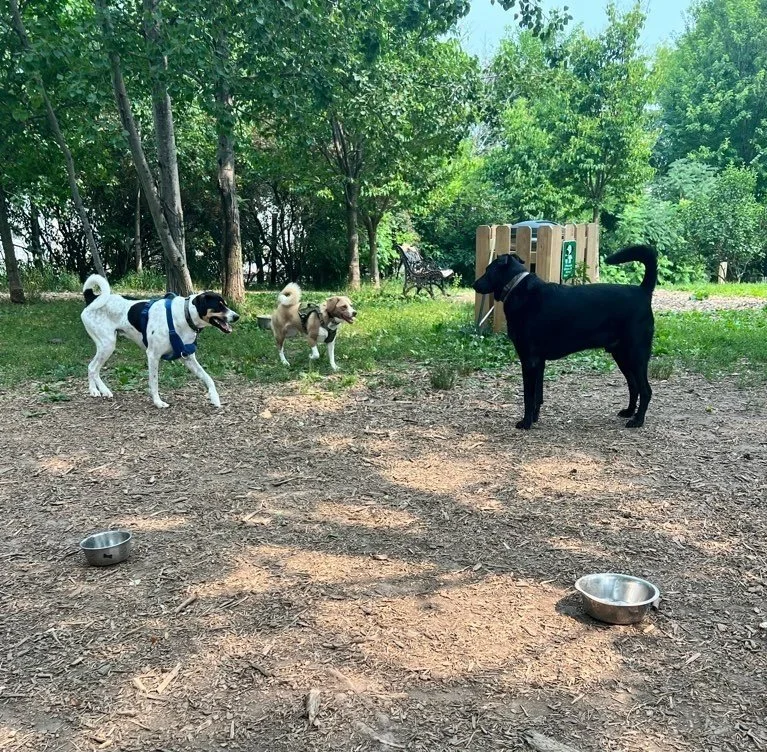
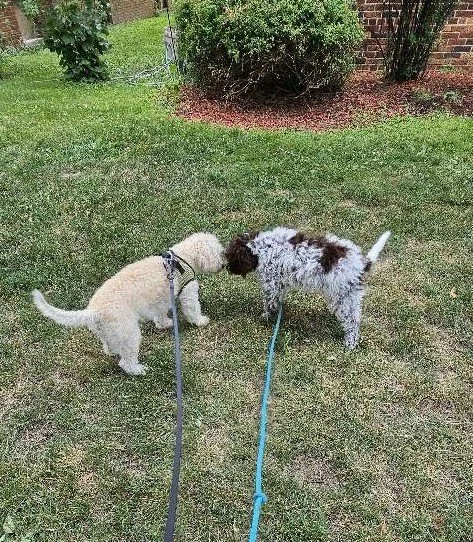
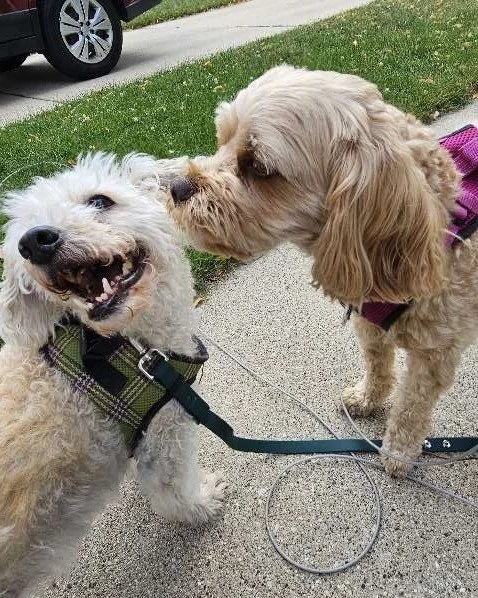
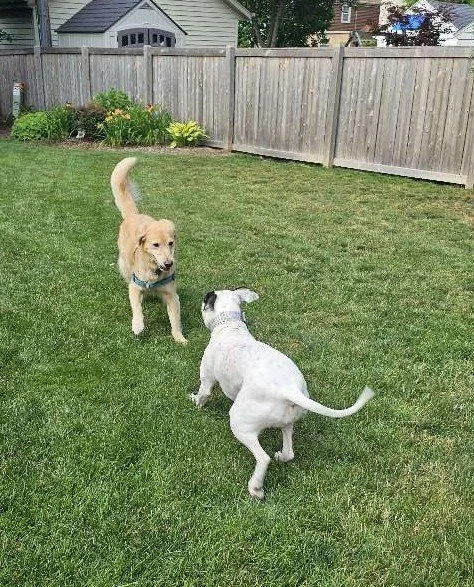
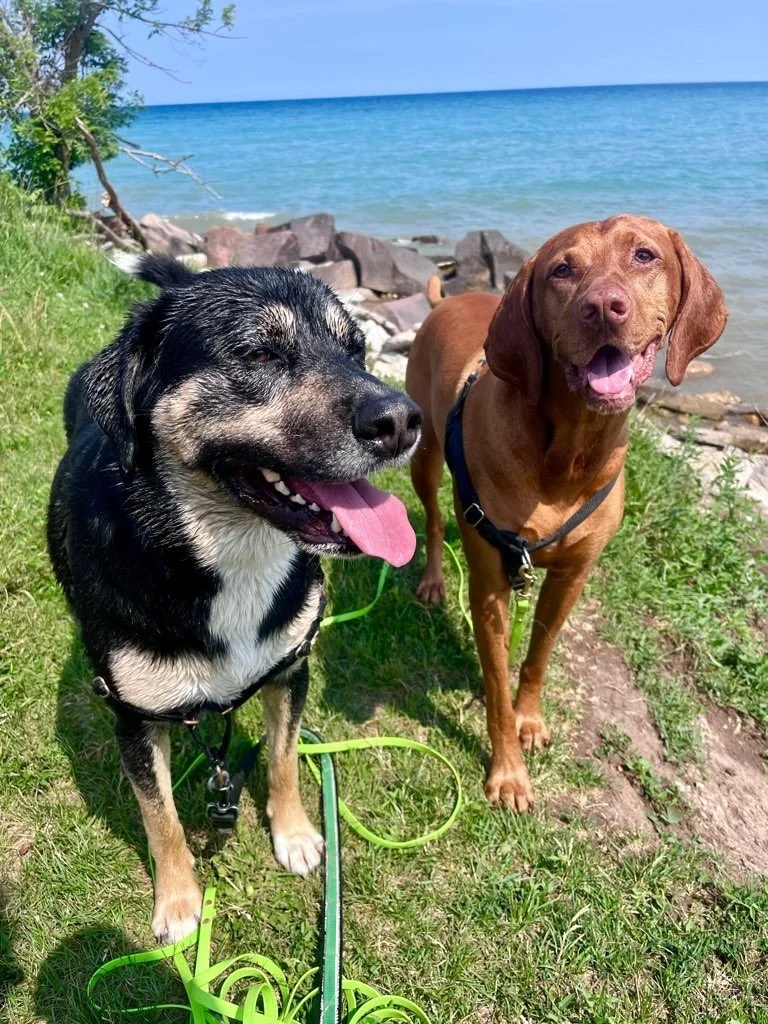


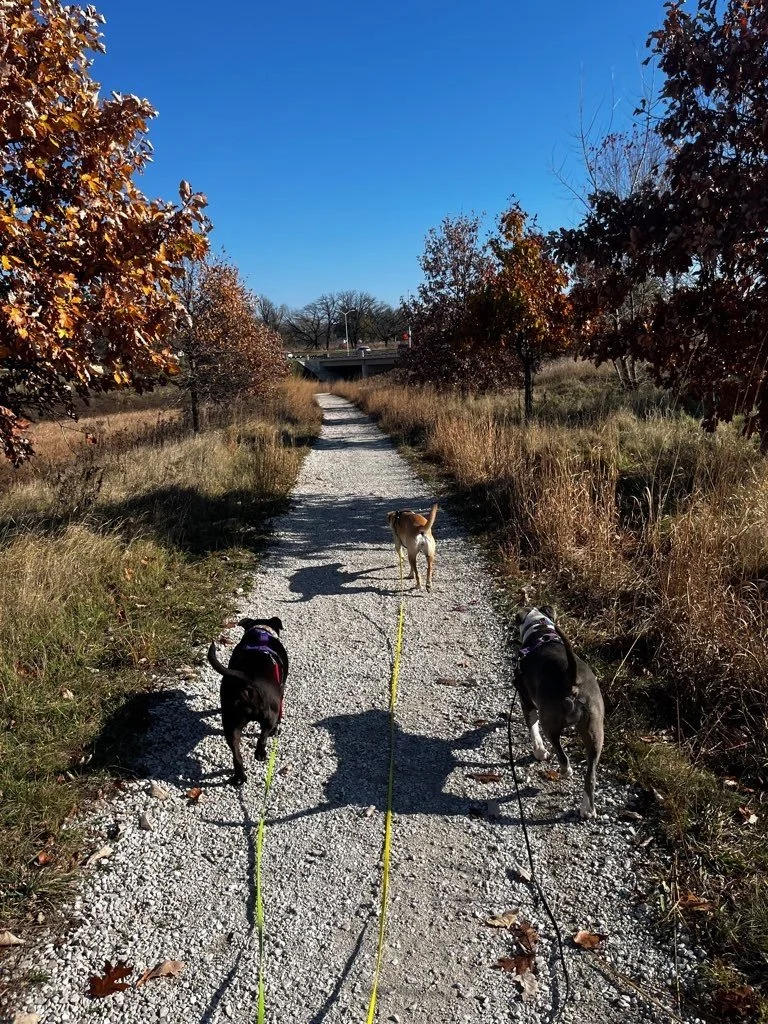
Dogs use appeasement gestures—subtle body language cues—to diffuse tension, avoid conflict, and express discomfort. Learn how to recognize these signals to better understand your pup’s emotions and strengthen your bond.